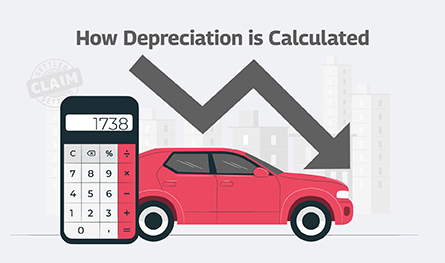Step-by-Step Guide to Filing a Term Insurance Claim

Term insurance is purchased with the expectation of creating a safety net for loved ones in case of one’s absence. Imagine someone purchasing term insurance from a reliable insurance provider. They pay all the premiums, but at the time of need, the insurer fails to settle the claim due to reasons like inadequacy of documents or a lack of understanding of the claim settlement process on the part of the insured. Sounds scary, right?

Well, it is for the insured as well as their nominee. But you do not need to worry about this if you understand the process of filing a term insurance claim inside out.
Understanding Term Insurance
Before we move ahead with the guide on filing for term insurance claims, let’s first take a quick detour to understand what term insurance is.
Term insurance is a life insurance plan that is designed to provide life coverage to an individual, called the insured, for a specific number of years. In case the insured passes away during the tenure of the insurance plan, the appointed nominee receives the sum assured, which is called the death benefit. Remember that term insurance is a pure life cover, i.e. it does not typically provide savings or profits during the tenure. If the insured survives the term, the policy comes to an end unless it’s a Return of Premium Policy.
Filing Term Insurance Claims: Step-by-Step Guide
When purchasing term insurance, you, as well as your appointed nominee, must know the claim settlement process. In case of the death of the insured, the nominee or a close relative will have to carry out the formalities. Here’s a simple guide to help you understand the term insurance claims:
1. Intimate the Insurer
The first step in filing for the claim is to inform the insurance provider about the insured’s demise. Remember that intimating the insurance provider about the insured’s demise has to be done within the timeframe stipulated by the insurance company. Most companies allow a period of 30 days.
2. File the Claim Settlement Form
The next step is filing the claim settlement form. The details will include the date, time, and nature of death, as well as any other information the insurance provider may ask for. Remember that if the insured passes away without appointing a beneficiary, then you will have to prove beyond reasonable doubt that you are the legal heir and are legally entitled to the benefits under the term insurance.
3. Submit the Required Documents
Once the claim settlement form is filled out, the insurance provider requires the nominee to submit all the relevant documents, such as the death certificate of the insured, insurance policy documents, etc. Know that depending on the reason for the insured's death, the document requirements can change. For instance, if the insured died due to a road accident, you might be asked to provide additional documents like a police FIR, etc. It is suggested that these documents be gathered promptly.
4. Wait for Verification and Approval
Once the insurance company has all the relevant documents in addition to the claim settlement form, they will carefully evaluate the claims and approve if no irregularities are found. You must know that the insurance company is under an obligation to settle/ reject the claims within 30 days of receiving the current documents.1
5. Settlement of the Claims
If the term insurance claims are approved, the sum assured under the term insurance is directly transferred to the nominee’s bank account, as mentioned in the policy document. Depending on the chosen plan, the death benefit may be paid either as a lump sum or in some instalments.

Author Bio
Paybima Team
Paybima is an Indian insurance aggregator on a mission to make insurance simple for people. Paybima is the Digital arm of the already established and trusted Mahindra Insurance Brokers Ltd., a reputed name in the insurance broking industry with 21 years of experience. Paybima promises you the easy-to-access online platform to buy insurance policies, and also extend their unrelented assistance with all your policy related queries and services.
Other Life Insurance Products
Latest Post
.jpg)
Having a bike is not just about convenience, it’s a huge responsibility. Financial protection of your two-wheeler is important and the best way to ensure that is to have a bike insurance policy that will protect you in case of an accident, theft or a natural calamity. There are so many options when it comes to policies, making it difficult to know what’s best. This guide makes it easier to choose the best bike insurance policy that is suitable for you.


Non-linked, non-participating term plans are the ones that do not participate in the business and profit of the insurance company. These are fixed premium plans where the policyholder pays a fixed amount to ascertain a guaranteed sum as a return to be paid to the nominee in case of his/ her demise. Let’s learn more in this post.


Car depreciation implies the difference between the cost of a car at the time of buying the car and when you sell it. A car insurance claim amount is determined by the car depreciation rate. The car depreciation rate is the reduction in the value of your car over its lifespan caused by wear and tear.


Have you ever caught yourself lost in illusions about your daughter's future events, such as her university convocation and first day at work? Her university convocation. When she embarks upon her initial job after graduation will be the day.

.png)
Accidents can happen anywhere, anytime, by your own fault or another person. What’s important is to be prepared for such mishaps. This is where Own Damage Car Insurance comes in handy.




